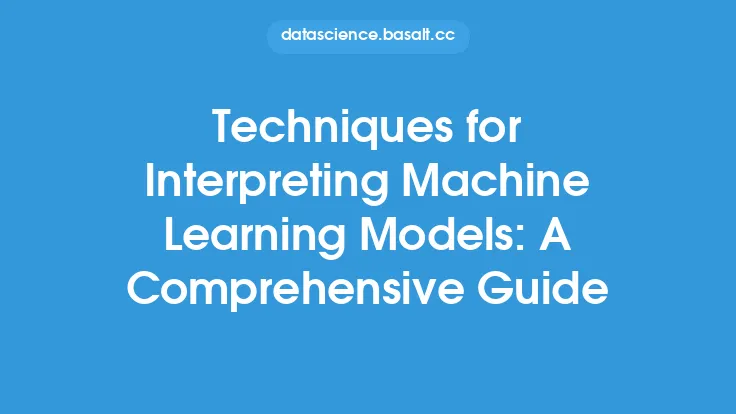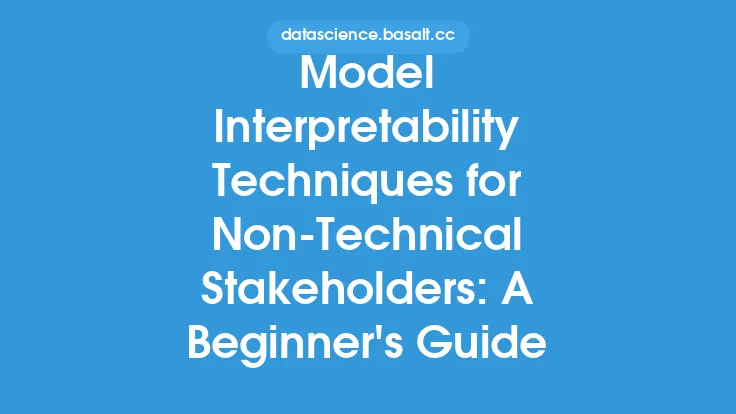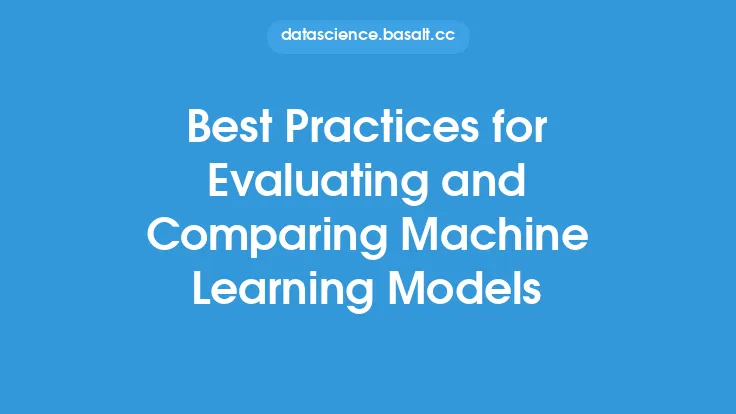As a beginner in machine learning, one of the most critical steps in building a successful model is selecting the right algorithm for your problem. With numerous algorithms available, each with its strengths and weaknesses, choosing the most suitable one can be overwhelming. In this article, we will delve into the world of model selection, exploring the key factors to consider, the types of algorithms available, and the techniques to help you make an informed decision.
Introduction to Model Selection
Model selection is the process of choosing the best machine learning algorithm for a specific problem. It involves evaluating different algorithms and selecting the one that performs best on your dataset. The goal of model selection is to identify the algorithm that generalizes well to unseen data, meaning it can make accurate predictions on new, unseen instances. A good model selection process involves considering several factors, including the type of problem, the size and quality of the dataset, and the computational resources available.
Types of Machine Learning Algorithms
There are several types of machine learning algorithms, each suited for specific problem types. The most common types of algorithms are:
- Supervised Learning Algorithms: These algorithms learn from labeled data and are used for classification and regression tasks. Examples of supervised learning algorithms include linear regression, decision trees, and support vector machines.
- Unsupervised Learning Algorithms: These algorithms learn from unlabeled data and are used for clustering, dimensionality reduction, and anomaly detection tasks. Examples of unsupervised learning algorithms include k-means clustering, principal component analysis, and autoencoders.
- Semi-Supervised Learning Algorithms: These algorithms learn from a combination of labeled and unlabeled data and are used for classification and regression tasks where labeled data is scarce. Examples of semi-supervised learning algorithms include self-training and co-training.
- Reinforcement Learning Algorithms: These algorithms learn from interactions with an environment and are used for decision-making and control tasks. Examples of reinforcement learning algorithms include Q-learning and policy gradients.
Factors to Consider in Model Selection
When selecting a machine learning algorithm, there are several factors to consider. These include:
- Problem Type: The type of problem you are trying to solve is a critical factor in model selection. For example, if you are working on a classification problem, you may want to consider algorithms such as logistic regression, decision trees, or random forests.
- Dataset Size and Quality: The size and quality of your dataset can significantly impact the performance of your model. For example, if you have a small dataset, you may want to consider algorithms that are robust to overfitting, such as regularization-based algorithms.
- Computational Resources: The computational resources available can also impact model selection. For example, if you have limited computational resources, you may want to consider algorithms that are computationally efficient, such as linear regression or decision trees.
- Interpretability: The interpretability of the model is also an important factor to consider. For example, if you need to understand the relationships between the features and the target variable, you may want to consider algorithms such as linear regression or decision trees.
Techniques for Model Selection
There are several techniques that can be used for model selection, including:
- Cross-Validation: Cross-validation is a technique that involves splitting your dataset into training and testing sets and evaluating the performance of your model on the testing set. This technique can be used to evaluate the performance of different algorithms and select the best one.
- Grid Search: Grid search is a technique that involves searching through a grid of hyperparameters to find the best combination for your algorithm. This technique can be used to tune the hyperparameters of your algorithm and improve its performance.
- Random Search: Random search is a technique that involves randomly sampling the hyperparameter space to find the best combination for your algorithm. This technique can be used to tune the hyperparameters of your algorithm and improve its performance.
- Bayesian Optimization: Bayesian optimization is a technique that involves using Bayesian methods to search for the best combination of hyperparameters for your algorithm. This technique can be used to tune the hyperparameters of your algorithm and improve its performance.
Common Model Selection Mistakes
There are several common mistakes that can be made during the model selection process, including:
- Overfitting: Overfitting occurs when a model is too complex and fits the training data too closely, resulting in poor performance on unseen data.
- Underfitting: Underfitting occurs when a model is too simple and fails to capture the underlying patterns in the data, resulting in poor performance on both training and testing data.
- Data Leakage: Data leakage occurs when information from the testing set is used to train the model, resulting in overly optimistic performance estimates.
- Inadequate Evaluation: Inadequate evaluation occurs when the performance of the model is not evaluated thoroughly, resulting in a poor understanding of its strengths and weaknesses.
Best Practices for Model Selection
There are several best practices that can be followed to ensure a successful model selection process, including:
- Start with Simple Models: Start with simple models and gradually increase the complexity as needed.
- Use Cross-Validation: Use cross-validation to evaluate the performance of your model and select the best algorithm.
- Tune Hyperparameters: Tune the hyperparameters of your algorithm to improve its performance.
- Monitor Performance: Monitor the performance of your model on both training and testing data to detect overfitting or underfitting.
- Use Domain Knowledge: Use domain knowledge to inform the model selection process and select algorithms that are relevant to the problem domain.
Conclusion
Model selection is a critical step in building a successful machine learning model. By considering the type of problem, the size and quality of the dataset, and the computational resources available, you can select the most suitable algorithm for your problem. By using techniques such as cross-validation, grid search, and Bayesian optimization, you can evaluate the performance of different algorithms and select the best one. By following best practices such as starting with simple models, using cross-validation, and tuning hyperparameters, you can ensure a successful model selection process and build a model that generalizes well to unseen data.





